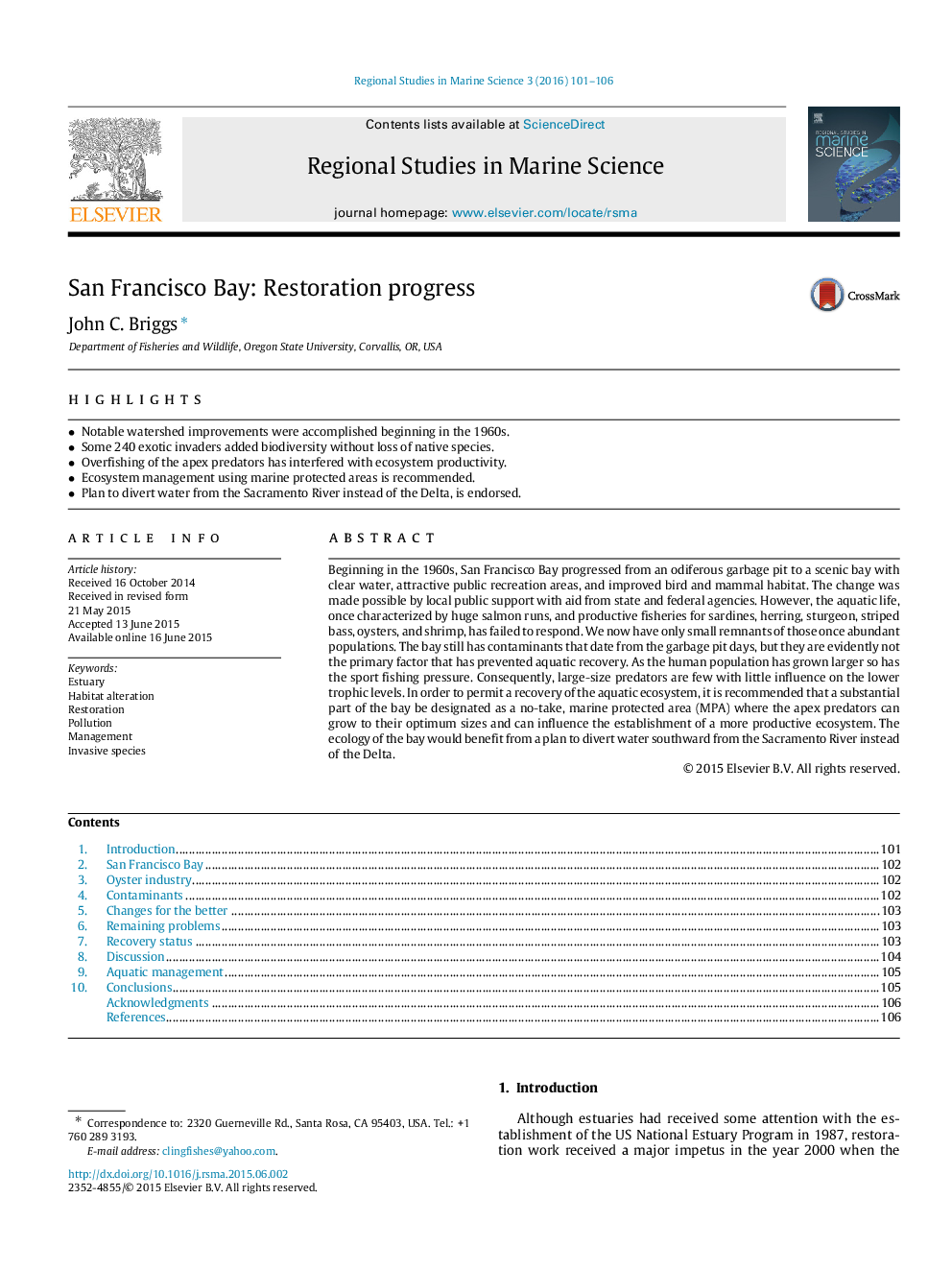| Article ID | Journal | Published Year | Pages | File Type |
|---|---|---|---|---|
| 6363118 | Regional Studies in Marine Science | 2016 | 6 Pages |
Abstract
Beginning in the 1960s, San Francisco Bay progressed from an odiferous garbage pit to a scenic bay with clear water, attractive public recreation areas, and improved bird and mammal habitat. The change was made possible by local public support with aid from state and federal agencies. However, the aquatic life, once characterized by huge salmon runs, and productive fisheries for sardines, herring, sturgeon, striped bass, oysters, and shrimp, has failed to respond. We now have only small remnants of those once abundant populations. The bay still has contaminants that date from the garbage pit days, but they are evidently not the primary factor that has prevented aquatic recovery. As the human population has grown larger so has the sport fishing pressure. Consequently, large-size predators are few with little influence on the lower trophic levels. In order to permit a recovery of the aquatic ecosystem, it is recommended that a substantial part of the bay be designated as a no-take, marine protected area (MPA) where the apex predators can grow to their optimum sizes and can influence the establishment of a more productive ecosystem. The ecology of the bay would benefit from a plan to divert water southward from the Sacramento River instead of the Delta.
Related Topics
Physical Sciences and Engineering
Earth and Planetary Sciences
Oceanography
Authors
John C. Briggs,
